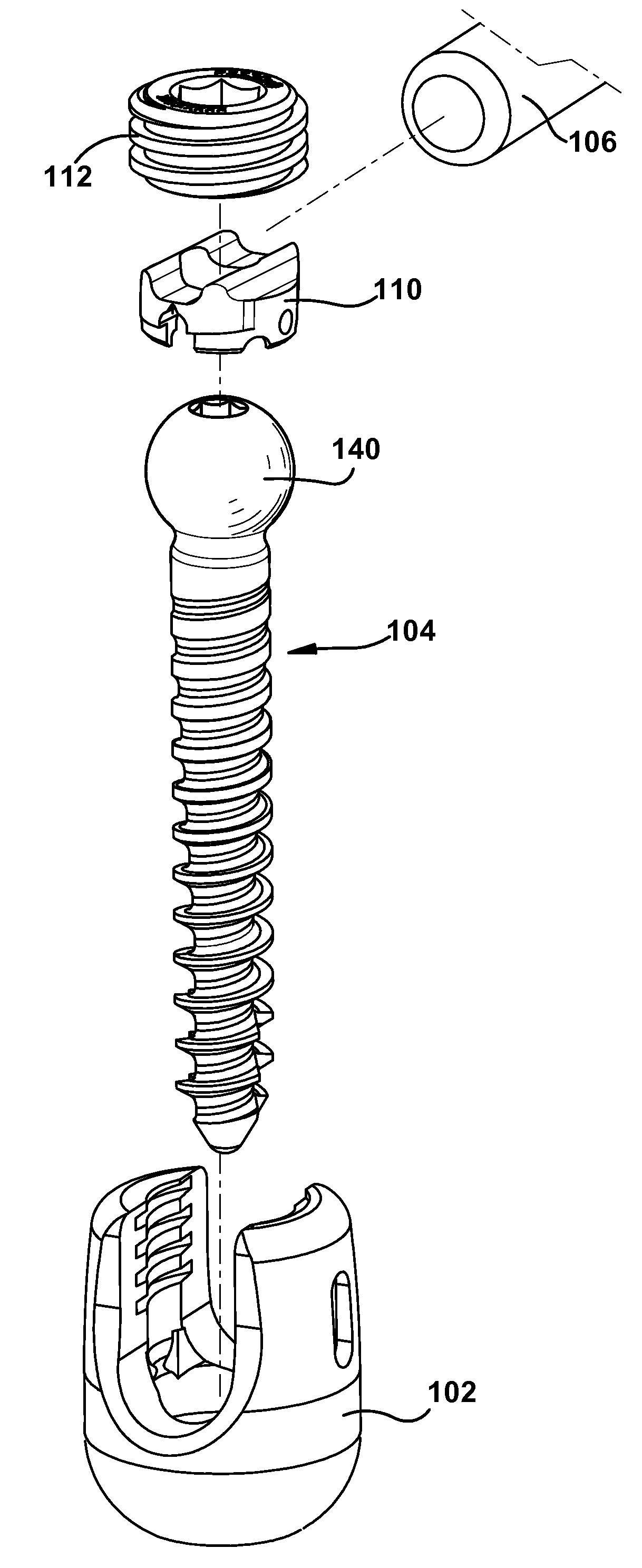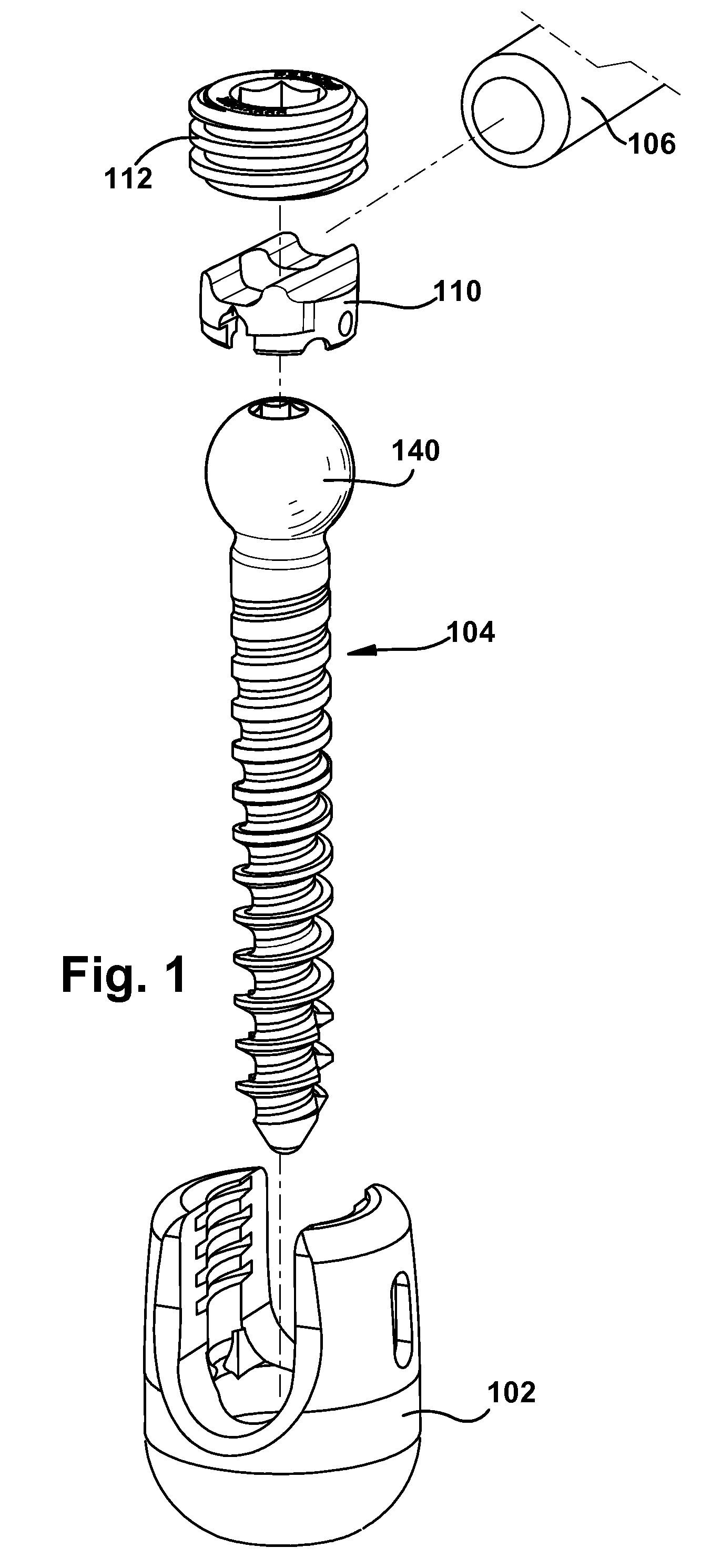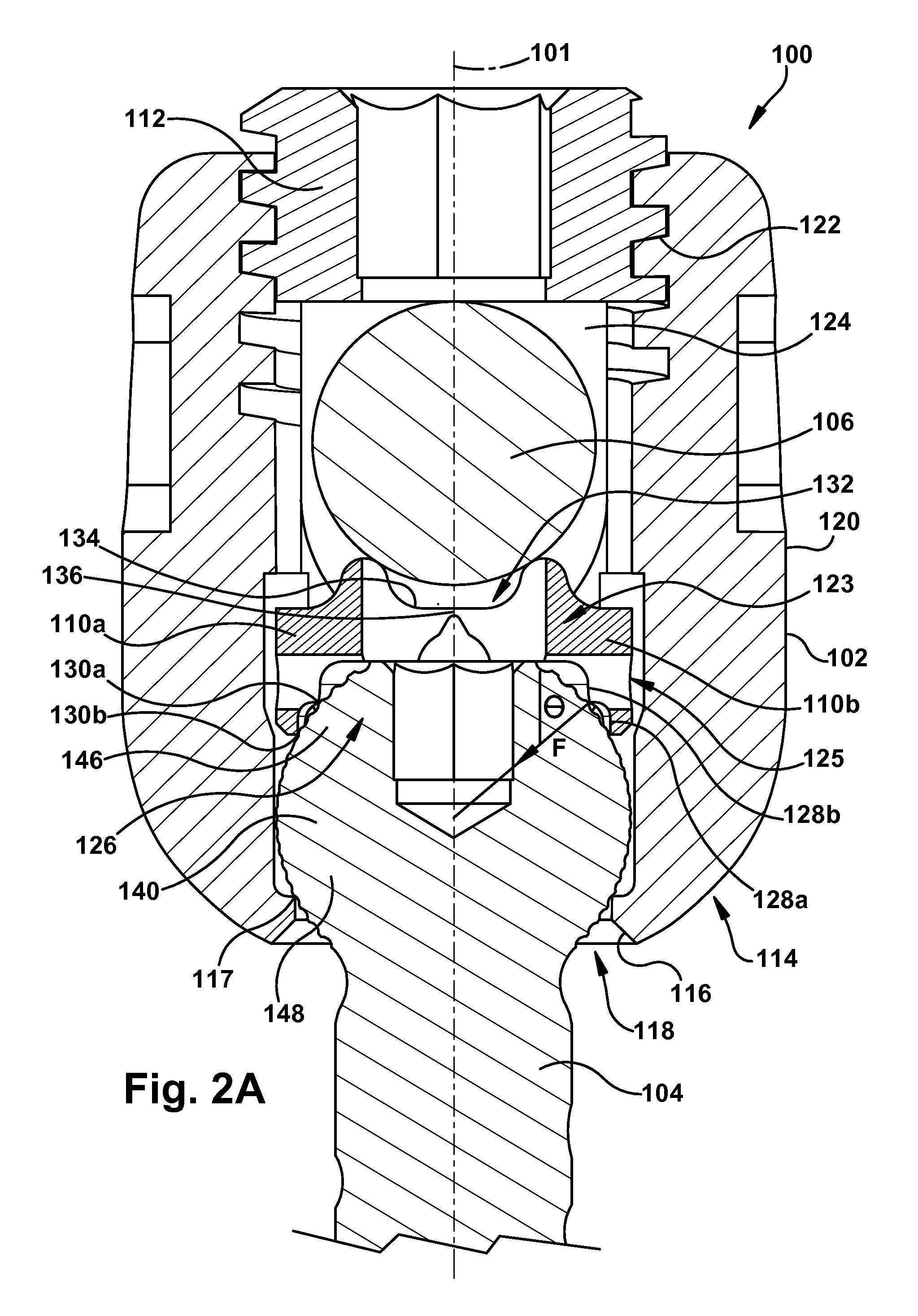Locking mechanism with two-piece washer
a locking mechanism and washer technology, applied in the field of spinal pathologies, can solve the problems of mechanical weakened predetermined locations, rest of rod seats, etc., and achieve the effect of enhancing the relative position of the rod and the fixation devi
- Summary
- Abstract
- Description
- Claims
- Application Information
AI Technical Summary
Benefits of technology
Problems solved by technology
Method used
Image
Examples
Embodiment Construction
[0030]The invention relates to novel locking mechanisms and methods for locking the relative positions of a rod and a fixation device. The locking mechanisms provide improved locking between a rod and the head of a fixation device, such as a screw. The various locking mechanisms disclosed herein include either a rod seat or a washer disposed between the rod and the fixation device.
[0031]Turning initially to FIGS. 1 and 2A-B, FIG. 1 shows an exploded perspective view of a locking mechanism, and FIGS. 2A-B show cross sectional views of the locking mechanism of FIG. 1 in unlocked and locked positions. The locking mechanism 100 is configured to engage and lock the position of a fixation device 104 with respect to the position of a rod 106. The locking mechanism 100 includes a body 102, a rod seat 110, and a locking element 112.
[0032]When the locking mechanisms of the present invention are used for spinal fixation, “above” or “top” means posterior with respect to the patient and “below” ...
PUM
 Login to View More
Login to View More Abstract
Description
Claims
Application Information
 Login to View More
Login to View More - R&D
- Intellectual Property
- Life Sciences
- Materials
- Tech Scout
- Unparalleled Data Quality
- Higher Quality Content
- 60% Fewer Hallucinations
Browse by: Latest US Patents, China's latest patents, Technical Efficacy Thesaurus, Application Domain, Technology Topic, Popular Technical Reports.
© 2025 PatSnap. All rights reserved.Legal|Privacy policy|Modern Slavery Act Transparency Statement|Sitemap|About US| Contact US: help@patsnap.com



